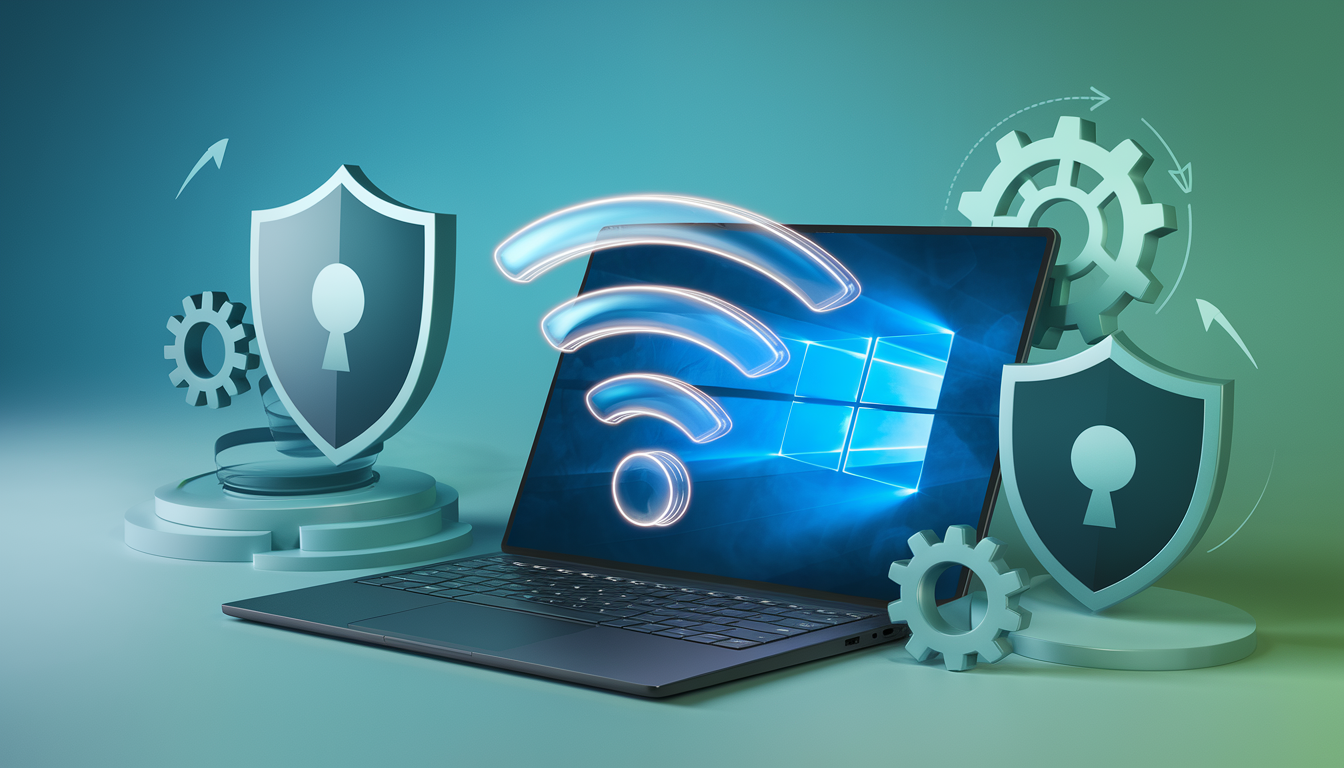Keeping your WiFi drivers updated on Windows 10 is important for ensuring a stable and secure internet connection. WiFi drivers play a significant role in maintaining the performance of your network, providing you with improved connection stability and enhanced security. Regular updates to your WiFi driver for Windows 10 can prevent potential issues and keep your system running smoothly.
Understanding WiFi Drivers
WiFi technology, as explained by Britannica, is a wireless networking technology that allows devices to connect to the internet or communicate with one another wirelessly within a particular area. Updating your WiFi drivers is essential for making the most of the full benefits of this technology, including faster speeds and better connectivity.
WiFi drivers are software components that enable your computer to communicate with your wireless network hardware. They act as a bridge between your operating system and the hardware, converting the data from your computer into signals that the hardware can understand and the other way around. Without these drivers, your computer wouldn’t be able to connect to wireless networks.
For most users, WiFi drivers work silently in the background, ensuring that your device can connect to the internet seamlessly. However, like any other software, they need to be updated regularly to fix bugs, improve performance, and enhance security. Understanding the role of WiFi drivers helps in recognizing the importance of keeping them up-to-date.
Why Update Your WiFi Driver for Windows 10?
Keeping your wifi driver for Windows 10 updated is crucial for ensuring your device performs at its best. Here are some key reasons why you should regularly update your WiFi drivers:
- Improved Performance: Updated drivers can enhance the speed and reliability of your internet connection. This means smoother streaming, faster downloads, and a more stable connection overall.
- Enhanced Security: Outdated drivers can cause security risks. By keeping them updated, you protect your system from vulnerabilities that could be exploited by malicious software.
- Compatibility: New drivers often come with updates that ensure compatibility with the latest software and hardware, preventing potential conflicts.
- Stability and Reliability: Regular updates help prevent connectivity issues, ensuring a stable and reliable internet connection.
- Prevention of Potential Issues: By keeping your wifi drivers current, you can avoid common problems like dropped connections or slow speeds.
Common WiFi Problems and Their Solutions
WiFi issues can be frustrating, but many common problems can be resolved by updating your WiFi drivers. Here are some typical WiFi issues and how updating your drivers can help:
- Connectivity Drops: If your connection frequently drops, an outdated driver might be the cause. Updating your driver can stabilize the connection.
- Slow Internet Speeds: Drivers that aren’t up-to-date can slow down your internet. By updating, you can potentially boost your speed.
- Network Not Found: Sometimes, your device might not detect available networks. Updating your driver can resolve this issue by ensuring your device communicates properly with the network.
Updating your WiFi driver for Windows 10 is a simple yet effective way to tackle these common issues and ensure a smooth online experience.
Step-by-Step Guide to Updating WiFi Driver for Windows 10
Keeping your WiFi driver up-to-date is crucial for maintaining a smooth and secure wireless connection on your Windows 10 device. Here’s a simple guide to help you update your WiFi driver manually:
- Check Current Driver Version:
- Press Windows + X and select Device Manager.
- Expand the Network adapters section.
- Right-click on your WiFi adapter and choose Properties.
- Go to the Driver tab to see your current driver version.
- Find the Latest Driver:
- Visit the manufacturer’s website of your WiFi adapter.
- Search for the latest driver compatible with Windows 10.
- Download and Install the Driver:
- Download the driver file from the manufacturer’s site.
- Run the downloaded file and follow the on-screen instructions to install the new driver.
- Restart Your Computer:
- After installation, restart your computer to apply the changes.
Following these steps will help ensure your WiFi driver is up-to-date, contributing to better connectivity and security.
Using Automatic Tools for WiFi Driver Update
For those who prefer an easy solution, using automatic tools can simplify the process of updating WiFi drivers. Here’s why and how you can use these tools:
- Convenience: Automatic tools like GetMyDrivers handle the entire update process, saving you time and effort.
- Accuracy: These tools ensure you get the correct driver updates, reducing the risk of errors that can occur with manual updates.
- Time-Saving: With automatic updates, you don’t need to spend time searching for the right drivers. The software does it for you.
How to Use GetMyDrivers:
- Download and install GetMyDrivers from their official website.
- Run the software and let it scan your system for outdated drivers.
- Review the list of drivers and choose to update your WiFi driver automatically.
- Allow the software to download and install the updates.
- Restart your computer to complete the update process.
Using GetMyDrivers not only simplifies WiFi driver updates but also enhances your system’s overall performance and security by keeping all drivers current.
Hassle-Free Solution for Updating Wi-Fi Driver
Updating your wifi driver for Windows 10 is a simple step that can lead to significant improvements in your system’s performance and security. By regularly updating your wifi drivers, you can enjoy a smooth and secure internet experience.For a hassle-free solution, consider using GetMyDrivers. This reliable software automates the process of scanning, updating, and managing your PC drivers, saving you time and effort. With GetMyDrivers, you can ensure your drivers are always up-to-date, protecting your system and enhancing its performance. Visit their website now.
